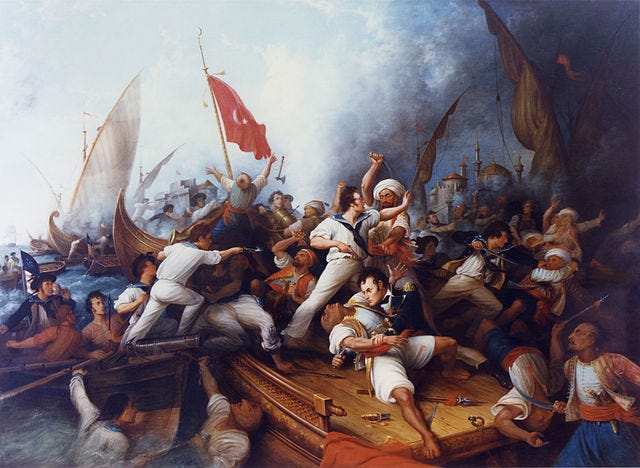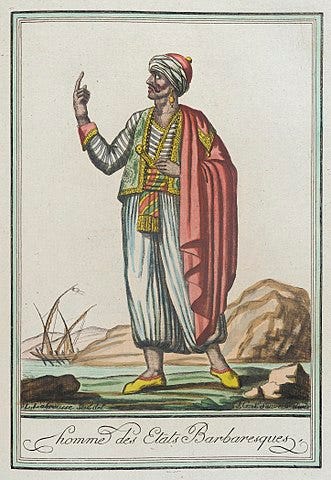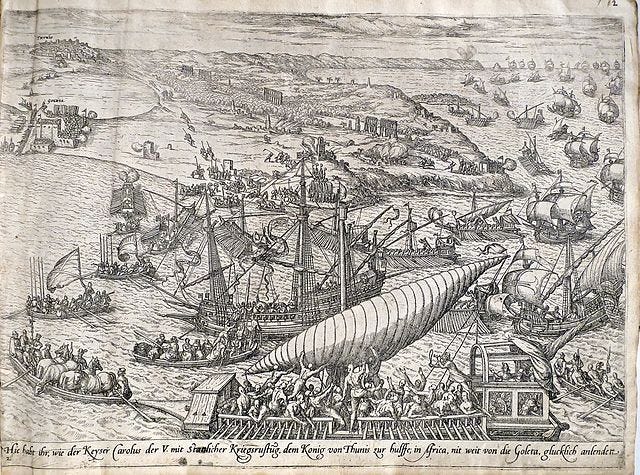In the modern era when someone thinks of pirates, they picture Caribbean seascapes with Johnny Depp as Jack Sparrow sailing for plunder. In reality while there were pirates like Black Beard whom those films are based off of, piracy as a practice was present in many different regions of the world. Today I will be focusing on the scourge of the Mediterranean known as the Barbary Corsairs. The scourge of Europe, these corsairs began raiding European merchant vessels and ports as early as the 13th century. These groups would progress over the next 600 years into vassal states of the Ottoman Empire and during this time selling up to 1.25 million European slaves across North Africa and the Middle East.
During the 16th and 17th century the pirates were admirals of the Sultan (Ottoman Empire’s ruler) who would attack European countries both on land and at sea. Cities like Algiers, Tunis, Tripoli had become autonomous military republics who chose their rulers and subsisted off of plunder, ransoms, and slavery. The two most well-known corsairs of the time were the Barbarossa brothers Aruj and Khayr al-Din. Both became “kings” of new state in the Maghreb known as the Ottoman Regency of Algiers. While nominally Muslims from North Africa, there are records of Sephardic Jews, including Sinan Reis and Samuel Pallache, who upon fleeing Iberia after the Spanish Inquisition became corsair captains as an act of revenge. Additionally, not all captains were men, Sayyida al-Hurra was a female Muslim cleric, merchant, and governor of Tétouan who fled to Morocco following the Reconquista. Her ships filled mostly with Moorish exiles who launched pirate expeditions against the Spain and Portugal.
Slavery and ransom of Europeans was at the center of the Barbary economics, as early as 1500 in addition to capturing sailors, the pirates began to raid coastal cities. This included Italy, France, Spain, England, and even as far as Iceland. By the 18th century, ransom from capture by the Barbary Pirates became so common place, coastal towns would collect funds in local churches to buy back those taken. The majority of those freed after captured were the rich who paid their ransoms or on occasion those willing to convert to Islam. Those unable to pay were forced into manual labor positions. One such group were assigned as galley slaves. Galleys used rowers shackled and chained, never allowed to leave their seats in the bowels of the ship. Sleeping, eating, and using the bathroom were done at the same seat. Overseers on the ship moved back and forth through the teams of 5 to 6 rowers, whipping those who were “underperforming”. These ships being on the ocean anywhere from 80 to 100 days a year made the conditions deplorable, many died as a result of disease, exhaustion, and mistreat by ship’s crew.
The destruction of Barbary States came about in the 19th century, from the newly independent United States of America. No longer under Great Britian’s protection the new nation’s merchants became targeted by the Barbary Republics. The First Barbary War (1801-1805) which was between The Regency of Tripolitania and the U.S, began with a dispute over tributary payments for commercial protection (against them). President Thomas Jefferson, seeing these tributes as extortion refused to pay, over the next 5 years a naval blockade and military actions lead to a peace treaty removing Tripolitania’s demand of tribute. A Second Barbary War was declared in 1815, this time against the Regency of Algiers for similar reasons as the first. This made many European nations realize the lack of numerical and technological development made the Barbary States too weak to enforce tributary payments. The final nail in the coffin was France’s invasion of Algiers in 1830, turning the area into an imperial colony for the next 130 years.








The conditions for galley slaves being so grave- can’t imagine how anyone could survive 80-100 days a clip in those conditions.